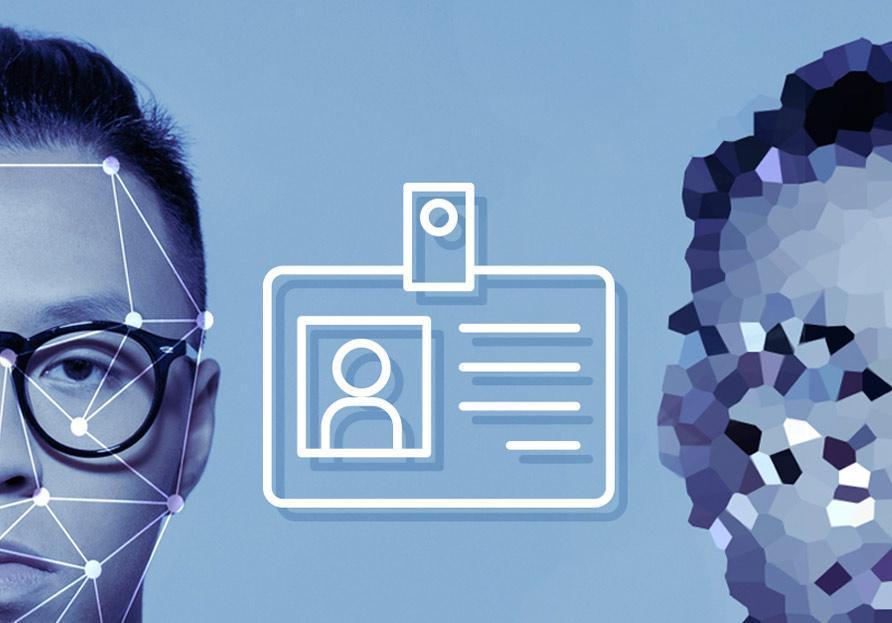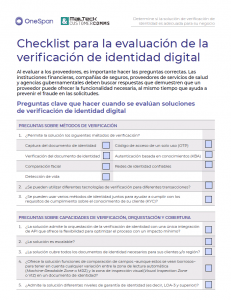
Due to branch closures, social distancing and health precautions, many of these processes must now be performed online. However, while some organizations can support these processes remotely, many are left exposed because they lack the digital identity capabilities to do so.
So where can you start? In this content, we’ll cover the best ways to get started with the
digital identity verification
within your organization.
Understand the role of identity verification in your organization.
Organizations of all types-including financial services, insurance, healthcare, and government-are leveraging identity verification and authentication identity verification and authentication to provide access to their services, help mitigate fraud and maintain regulatory compliance. Identity verification is an important process to ensure that a person is who they say they are.
Digital identity verification can be achieved using a variety of technological tools-from document verification (scanning a government-issued ID to determine if it is legitimate), to facial biometrics, one-time passwords and more.
Some common scenarios for implementing digital identity verification include:
- Remote account opening: a new customer wishes to open an account remotely, such as a checking or savings account, or apply for a loan.
- Account maintenance: An existing customer wishes to make changes to an account, such as changing their address, adding a spouse or child to an account, or designating a new beneficiary.
- Additional product offerings: an existing customer wishes to request an additional product offering, such as financing, a loan or a new insurance policy.
In particular, financial institutions work with identity verification when onboarding customers. When a customer wishes to open an account, banks must follow strict procedures to verify the customer’s identity in order to comply withKnow Your Customer ( KYC) andAnti-Money Laundering (AML) requirements. While requirements vary by country, the process generally involves verifying the authenticity of an identity document, such as a passport, ID card or driver’s license.
Traditionally, a customer would walk into a bank branch with his or her identity documents and a bank employee would verify those documents and make photocopies. But this process has changed in an era of physical distancing and remote interactions. With an increasing number of applicants hesitating to visit a bank branch to open an account, digital identity verification has become a key requirement for remote opening and onboarding procedures.
Selecting the right identity verification solution
There are numerous identity verification solutions on the market today. Increasingly, organizations are implementing document-centric identity verification techniques. In fact, Gartner1 predicts that by 2022, 80% of organizations will use document-centric identity verification as part of their onboarding workflows.
Document-centric identity verification links a person to his or her identity by verifying his or her identity document and ensuring that the person in possession of the document is the person listed on the document (which helps detect fake or stolen identity documents). The process is simple and safe:
- Identity document capture: with a mobile device, the applicant takes a photo of his or her identity document, such as a passport, ID card or driver’s license.
- ID document verification: behind the process, artificial intelligence and advanced authenticity algorithms analyze the image to determine whether the ID document is fake or authentic.
- Verification of the applicant with the identity document: the photo of the document is compared with a selfie provided by the applicant (facial biometrics). To ensure that the applicant is truly present during the process, he/she is asked to smile, blink or nod (life detection).
In addition, the customer can use an electronic signature electronic signature in the same session, if necessary as part of a broader acceptance process. This is often the case in account opening, where banks must ensure that an agreement is legally binding and admissible in court.
Selecting the right digital identity verification solution requires companies to determine whether a solution or vendor can offer document-centric identity verification to ensure that customers and remote businesses have access to their services, while helping them reduce application fraud.
How to determine if an identity verification solution is right for your business
When evaluating suppliers, it is important to ask the right questions. Financial institutions, insurance companies, healthcare providers and government agencies should look for answers that demonstrate that a vendor can deliver the necessary functionality based on their organization’s usage scenarios and risk tolerance. The goal is to digitize each stage of the customer journey and at the same time prevent application fraud. fraud in applications.
Key questions to ask yourself when evaluating digital identity verification solutions
Questions about verification methods:
- Does the solution allow the following verification methods?
- Capture of the identity document
- Identity document verification
- Facial comparison
- Life detection
- One-time passcode ( OTP)
- Knowledge-based authentication ( KBA)
- Trusted identity networks
- Can different verification technologies be used for different transactions?
- Can multiple identity methods be used together to help meet Know Your Customer (KYC) compliance requirements?
Questions about verification, orchestration and coverage capabilities:
- Does the solution support identity verification orchestration with a single API integration that provides the flexibility to streamline the process with minimal impact?
- Is the solution scalable?
- Does the solution cover all the necessary identity documents for your customers and/or region?
- Does the solution offer field comparison functions – even if the fields are blurred – to take into account any variations between theMachine-Readable Zone (MRZ) and theVisual Inspection Zone (VIZ) on an ID document?
- Does the solution support different levels of identity assurance (i.e. LOA-3 and above)?
Questions on key performance indicators:
- Are your average response times for each type of verification method below the industry benchmark of 15 seconds?
- Do you have a guaranteed SLA for response times?
- Are error rates (false positives or false negatives) generally below the industry benchmark of 5%?
- Is there a provision for service resilience if one or more methods of identity verification are not available?
Questions about data privacy and audit trails:
- Can the solution provider give you a clear indication of what happens to the identity data once captured and how it is stored?
- Does the solution provide a complete audit trail?
User experience and workflow questions:
- Is the solution fully automated or does it use a combination of automated and manual verification?
- Can the solution support electronic signatures?
- Does the vendor offer fraud detection and downstream authentication capabilities to support the entire digital identity lifecycle, before and after onboarding?
- Could the solution be a private label product that can be customized?
- Does the solution offer a user experience optimized for mobile devices?
You can also download our
Identity Verification Readiness Checklist
for a complete list of questions to ask when evaluating digital identity verification solutions.
Introduction: what to consider before implementing digital identity verification
The best way to get started with digital identity verification is to understand your risk tolerance for identity verification and in which processes you plan to implement it. Here are three recommendations to get you started.
- Plan the events in the customer journey for which identity verification is required. This can also apply to your authentication workflows.
authentication
so you don’t necessarily have to limit yourself to identity verification only here. - Link the identity verification capabilities that are applicable to each event in that customer journey.
- Understand the level of security required for each event. This is ultimately tied to the risk and process at hand, but it is important to have this conversation with your business stakeholders, including compliance, security and digital teams. The goal is to balance risk, security and customer experience.
A central approach to digital identity verification
OneSpan’s digital identity verification solution uses a central approach, allowing companies to access multiple verification methods through a single API integration. The one-to-many integration approach results in higher pass rates and allows failover in case of latency or downtime.
You can learn more about OneSpan’s identity verification and our core approach here.
here
.
> If you were interested in this article, we invite you to read this content on how banks can automate their legal communications through the online postal burofax.
Checklist for digital identity verification assessment
When evaluating suppliers, it is important to ask the right questions. Financial institutions, insurance companies, healthcare providers and government agencies should look for answers that demonstrate that a provider can deliver the required functionality, while helping to prevent application fraud.

Content extracted from OneSpan.